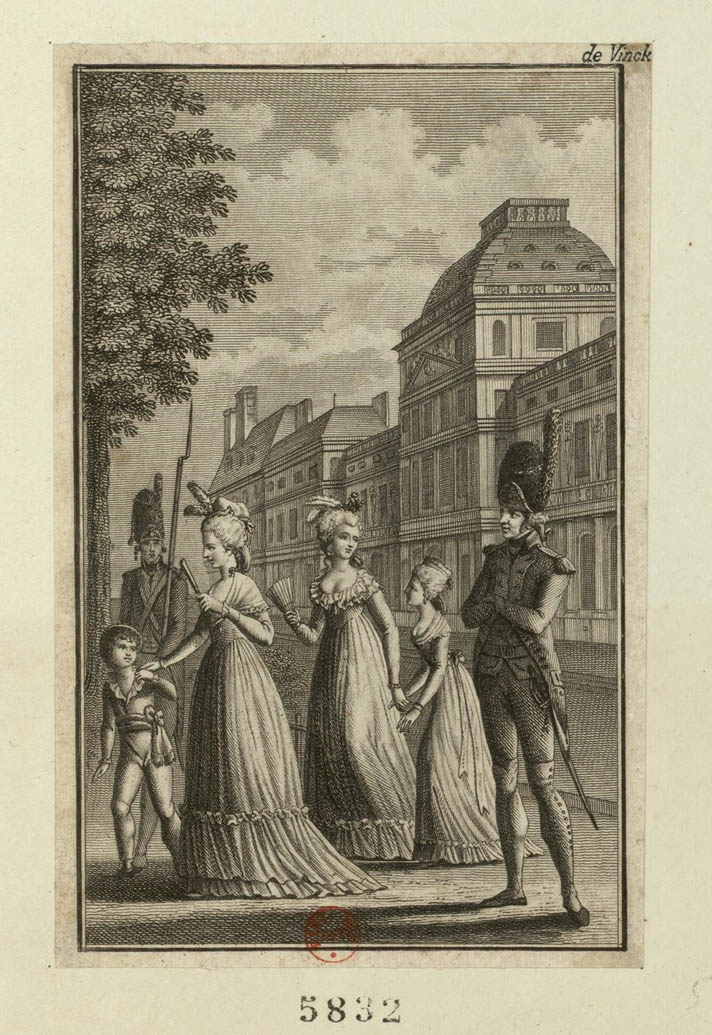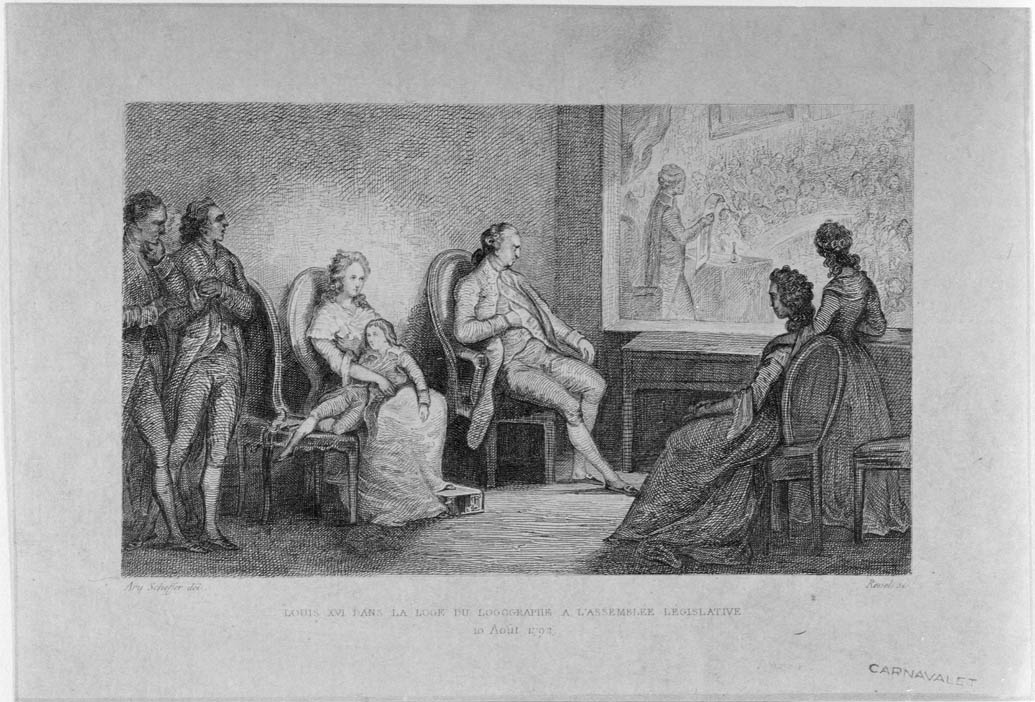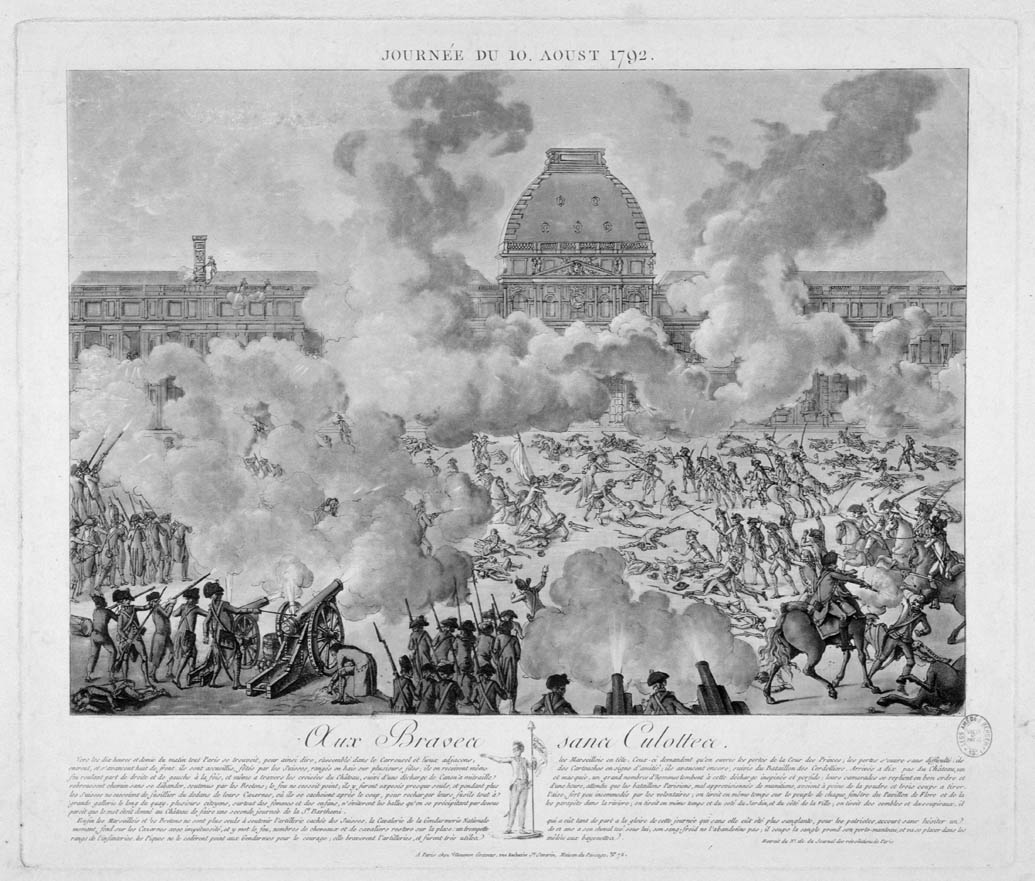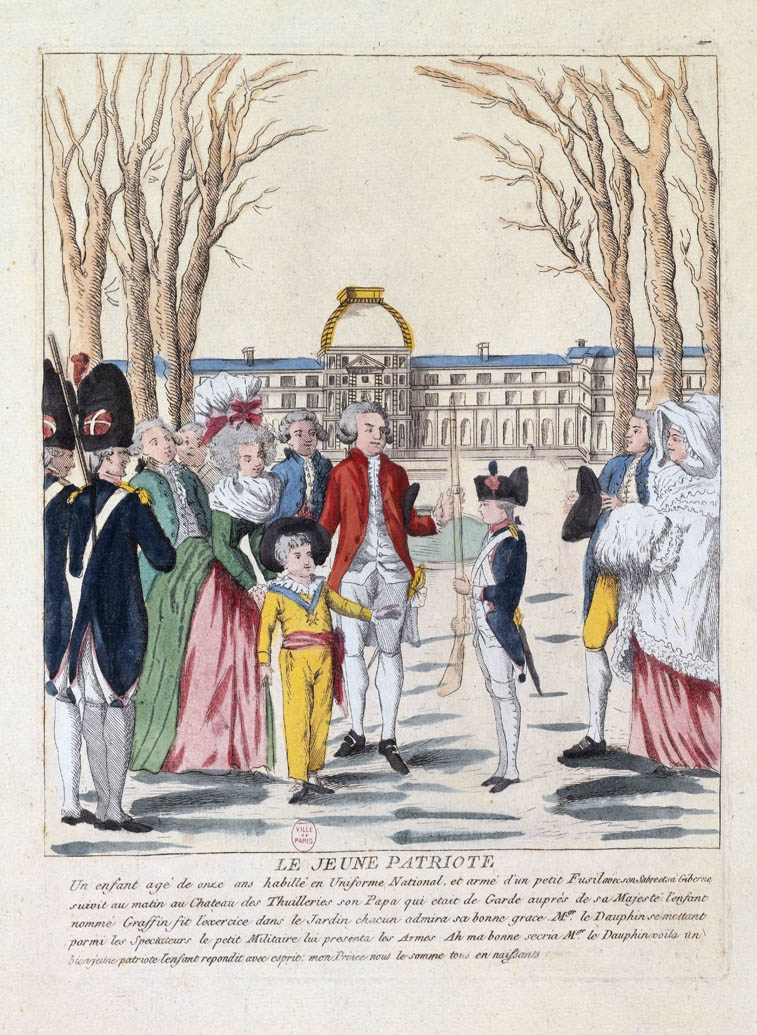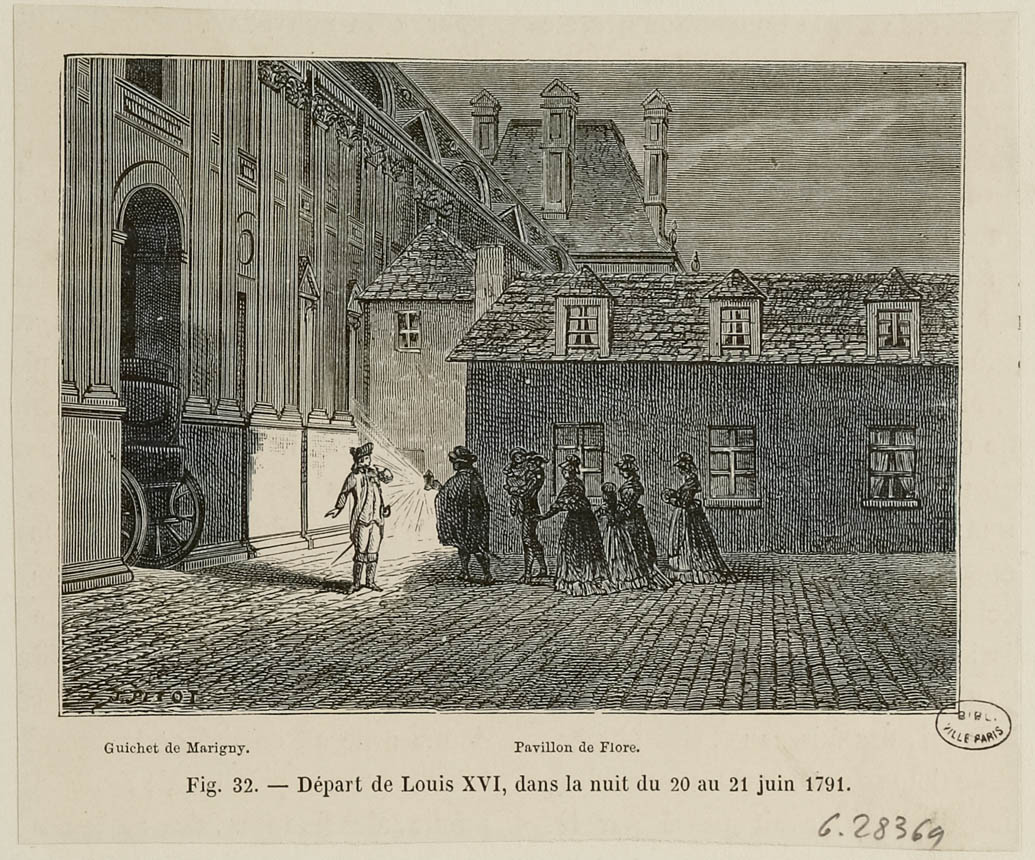The King's Return to the Tuileries and the Fall of the Monarchy
On August 10, 1792, sans-culottes attacked the Tuileries palace. The insurrection resembled a military siege. The king had showed that he no longer supported the Revolution. Even worse: he did everything he could in order to make it fail. Around ten o’clock in the morning, battalions of “federates” attacked the Swiss Guards who defended the king. The fighting resulted in several hundreds of deaths. Cornered, Louis XVI found refuge with his family in the Assembly’s Salle du Manège, before being arrested and incarcerated in the Temple keep. This was the end of the monarchy.
After the Women’s March on October 5-6, 1789, the royal family, ministers as well as the entire court had to leave the Versailles castle and relocate to the Tuileries. Abandoned for more than a century, the Parisian castle suddenly became, once again, the center of power that it had been for centuries. And yet, nothing was the same. The court was in the middle of Paris. The people rushed to glimpse the kingdom’s major figures. The situation was completely new and cohabitation was sometimes difficult…
Location
ItineraryAvenue du général Lemonnier, on the steps
Suggestion
The Louvre and the Tuileries neighborhood
The National Garden of the Tuileries
To find out more…
An unexpected move
The royal family and court’s move to the Tuileries on October 6, 1789 was both sudden and totally unexpected. In just a couple of hours, individuals who occupied the castle’s apartments, more or less legally, were told to leave! It was chaos! If the less prestigious renters were simply thrown out, noble families were rehoused. Since 1776, Madame de La Marck, the former mistress of Louis XV, had carried out so many renovations in her luxurious apartment, now occupied by the queen, that she was given a colossal compensation of 120,000 French livres, paid with public funds.
Giving the king a good image
Since the beginning of the Revolution, Queen Marie-Antoinette was the focus of criticism. Not only did she seem distant, but she had difficulty hiding her firm opposition to the events. As for King Louis XVI, he was still very much beloved, but he needed to prove that he could become closer to the people. After a brief adaptation period upon arriving to Tuileries, the king implemented everything he could to change his image as well as that of his family. However, it was not easy, as this anecdote from the “Little Patriot” demonstrates: “An eleven-year-old child dressed in a national uniform and armed with a small rifle (…) followed his father one morning to the Tuileries palace where he worked as the Majesty’s guard. The child named Graffin performed exercises in the garden. Everyone admired his gracefulness. Since His Highness, the Dauphin, was among the spectators, the small soldier presented him with arms. ‘Ah, my goodness,’ cried His Highness the Dauphin, ‘here is a very young patriot indeed!’ The child responded spiritedly: ‘My Prince, we are all born patriots.’ The National Guard’s young son thereby was suggesting to the Dauphin, heir to the throne, that everyone’s equal birthright made all French people naturally revolutionary…
The king flees
It was during the night of June 20-21, 1791 when the royal family escaped under great secrecy from the Tuileries palace. The goal was to reach the border of France. There, it would be possible to find help from foreign armies in order to stop the Revolution in France. The operation was very risky. The king was disguised as a valet, answering to the name of “Durand.” Madame de Tourzel, the governess for the royal children, took on the identity of Madame de Korff, a Russian baroness. As for the queen, she played the role of the governess, Madame Rochet. Although this may sound like an adventure story, the consequences were quite real for the royal family: unmasked in Varennes, they were escorted back to the Tuileries amidst an extremely tense atmosphere. After this episode, the castle was locked up like a prison around the royal couple, their children and entourage.


